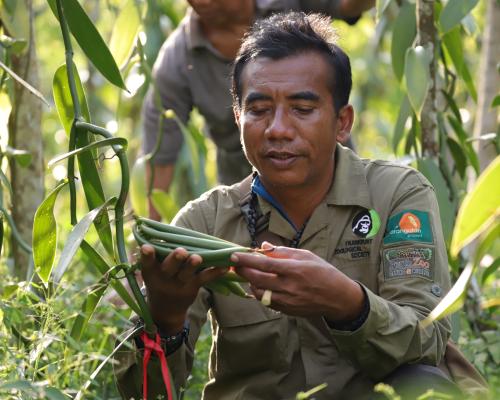A young Sumatran elephant had been separated from its herd and travelling towards a town. This was dangerous to both people and the animal. Rescuing it was a daunting task, requiring a large team and a lot of elephant knowledge but FZS Sumatra was ready.

Protecting elephants and people in Sumatra
Sumatran elephants (Elephas maximus sumatranus) are threatened with extinction. Habitat loss is a massive issue for them, as is human-wildlife conflict which can happen when the animals enter farmer’s fields or plantations in search of food. Last year, this was the reason one young elephant entered a plantation, but instead of finding food, it became entangled in a snare originally set to trap wild boar. A month later, local villagers found the elephant and alerted the FZS Sumatra team using a special hotline set up for this purpose.
The FZS Sumatra team and partners from the Nature Conservation Agency of Jambi stepped in rescue the elephant and reunite it with its family. Its herd is normally located in the Bukit Tiga Puluh landscape, and when tracked, was found to be nearly 200 km away from the calf. The technicalities involved in sedating and transporting a young, wild, and heavy animal are full of challenges, such as finding the right sedation dose and making sure the elephant does not become too frightened.
Elephants and people have a complicated relationship in this part of the world. Farmers are afraid of losing their crops to the animals which can lead to retaliation and elephants can become aggressive, especially when frightened.
To mitigate this conflict, the FZS Sumatra team has been operating an early warning system since 2012. This system is a software program that tracks elephants in real-time. Information about the elephant’s whereabouts is then provided to more than 250 smallholder farmers, warning them if an elephant is approaching their property.
Additionally, the team conducts organized patrols to monitor elephant movement and well-being, and they also run regular training on how to use deterrents and provides financial support for the construction of elephant protection fences.
In the case of this young female elephant, helping her return to her herd was important not just for the safety of the villagers in the town she was heading towards, but also for the survival of her species.














